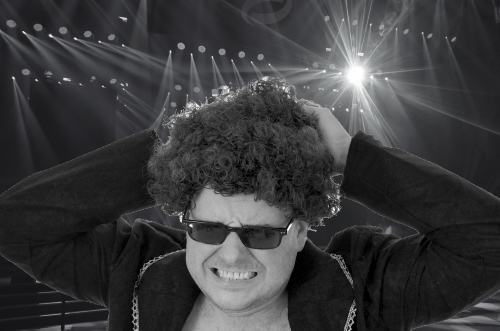One of my favorite quotes goes something like this: “Let’s take some of these things over which we have no control, and do something about them.” I only wish I knew who originally said this, because that person is my hero.
This article is my attempt at accomplishing this goal, because I tend to think of bad sound as something that I often have no control over, but nevertheless I want to fix it because it’s a crime against the audience.
Sure, there are times when the gear is at fault but let’s be honest – it’s more often not the fault of the operators. That’s right; it’s you and me screwing up the sound. So here’s my list of reasons for bad sound and how these problems might be overcome.
10. Promoters, event coordinators, pastors, principals, and others in charge of events that just don’t know what real is, what it costs, or even how to ask for it.
They’ve done so much with so little for so long, that they don’t have any clue how bad it really is. They hire a DJ with loudspeakers on a stick when they need to cover an event with a PA, including background music, speeches, dancing, etc., for 450 people.
They low-ball all the local vendors and squeeze them for every dime. Unfortunately, some of these folks actually DO know what it would take to do it right and they just don’t care. I’m sure you’ve been involved with events like this. I certainly have.
The solutions are tricky. But first, the only professional way to deal with one of these situations—once it’s too late to turn back— is of course to do everything in the world possible to make it as good as it can be. The down side is that the event will likely succeed as a result of your efforts and the problem is perpetuated (and of course if it fails, you’re likely to be blamed).
My first suggestion is to flat-out turn down any work that you know will be like this, and politely explain that your (and your company’s) goal is to always provide professional sound at hired events, and that for such little money, you simply can’t provide the proper tools and people to get good results.
Yes – there are companies and individuals that will whore themselves out for the bottom dollar. Just don’t be one of them if you can help it.
Failing that (and we have all failed that – often because we don’t realize what kind of a gig it will be until it’s too late), the next step is to very politely explain to the powers that be, after the gig is over, that a lot of problems could have been avoided, and better sound could have been had (meaning more, and happier, customers) if they had budgeted enough money and listened to the right experts about how it should have been done.
They may or may not take any interest. But at least you know to avoid this particular job in the future, and you can warn your friendly and like-minded competitors about it.
9. Bad acoustics.
Yes – we all know that there are venues where good sound simply can’t be had. Here in Albuquerque, there is the Tingley Coliseum. Many bands avoid our city and one of the reasons is this venue. It really is that bad, but it can be tamed – at least to a certain extent.
One of the better-sounding shows I’ve ever seen happened to be in Tingley: Sarah McLachlan. I talked to Gary Stokes, her FOH guy, about it, and he admitted that the place wasn’t ideal. But he started running down the list of things he’d considered towards making the best of it.
He did say, “If this was Barbra Streisand, we’d have a huge budget and I would have hung heavy drapes to block off the back third…” In other words, he knew what it would have taken to make it even better, but not within practical means for him at the time. Maybe someday Gary will get to mix Barbra in there, and see if the drapes would really help!
For one thing, really bad rooms do not benefit from blasting the audience with more power than needed. If anything, go light. Cut down the PA and think extra carefully about how to avoid the walls, ceiling, etc. and only have sound reaching the people and nowhere else.
Think of ways to cut down on stage volume – the move to personal monitors has certainly helped our efforts in this regard. It’s simply not good enough to say “the room sucks” and just do business as usual.
8. Inadequate gear.
Sometimes, this can be a result of the forces in number 10 above, but often, things can be done to help the problem. If you’re somehow in the position of trying to make good sound and keep making good sound when the loudspeakers just won’t cover the room, be sure to think about getting extra boxes somehow or re-positioning the boxes you have in order to get the best results possible.
I remember one situation where the venue was a hall with three balconies. The local guy pointed out that with the loudspeakers he had, he usually could not reach the top balcony, so he positioned his loudspeakers to cover the floor and the first two balconies with good sound. This is a reasonable compromise.
We augmented what he had with some additional mid-high boxes pointed at the third balcony, and we ended up with a reasonable success.
You may not be so lucky. But like in number 10 above, be sure to stay professional. Also inform the powers that be as to the nature of the problem. They may not listen, or care, but you have done the right thing.
We’ve all spent countless hours fixing cables, snakes, loudspeaker connectors, consoles, amps and racks just to get through the gig. That’s what makes us who we are. It’s always our job to do our best, no matter how crappy the situation.
7. Loud stage.
Fortunately, this problem has diminished with the proliferation of personal monitor systems. What a godsend!
But plenty of tours, events and shows still use wedges due to artist demand, budget, or lack of understanding of personal monitor systems and how to make them work. So when you get your wedges, drums, guitar amps and anything else on the stage into all the microphones, your mix will suffer.
I strongly suggest getting familiar with the nuances of running personal monitor systems if you haven’t done so already. Then look for other ways to cut down on stage volume. Is the guitar player pointing his cabinet at the back of his knees? Is the drummer using a shield? Are there other ways you might be able to mic the stage to cut down on picking up the wash?
Working on each one of these elements will gradually clean up the mix and give you more control over how you want to shape the sound.
6. Time of arrival.
Most of the PA systems I’ve ever seen do not account for this effect. And, frankly, worrying about it does not make sense in every instance.
That said, now that we have digital delay available in the consoles, drive racks and other devices, there is no excuse for ignoring this effect. What I mean is that if you’ve got a loudspeaker on a stick on each side of the stage, pulpit, lectern or whatever, and you are not delaying the signal appropriately, the sound will appear to the audience to come from the loudspeakers and not the person talking or singing.
Get familiar with sound propagation speed (1,130 feet/second at room temp at sea level) and know that it equates to about 1 mS per foot of distance.
With that in mind, just think about how you might delay the signal just enough so that most people in the audience hear the person’s voice slightly before they hear the sound from the PA. The illusion will be that the source of the sound is the person, not the PA. Look up the Haas effect.















